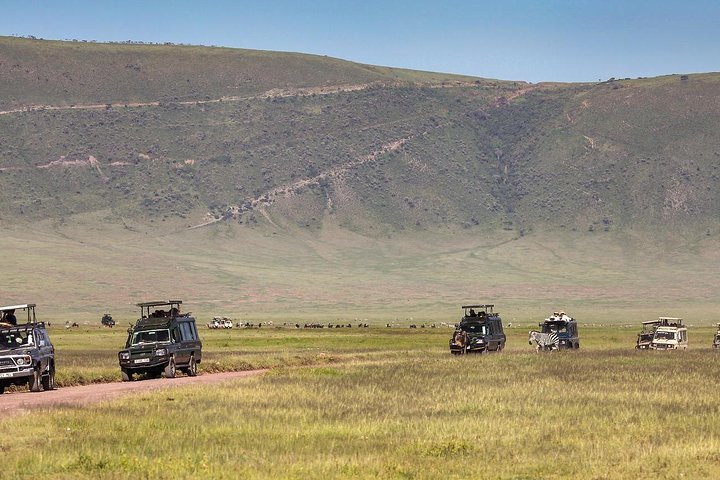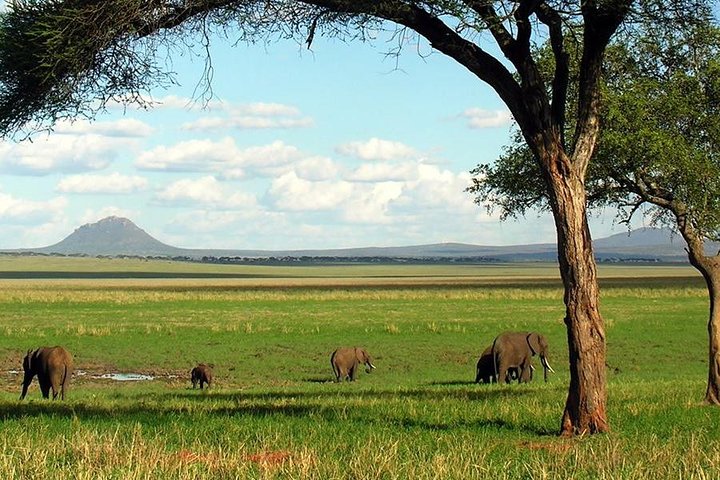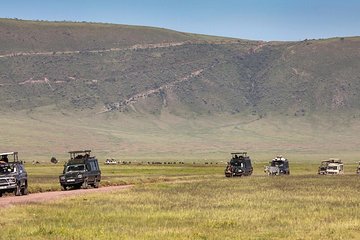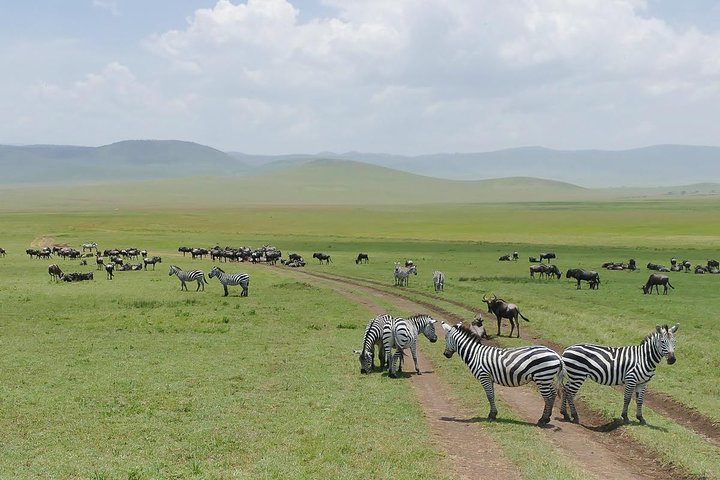The Ngorongoro Crater is the world’s largest volcanic crater. More than 2,5 million years ago, Ngorongoro was a volcanic mountain, the size of Kilimanjaro, and one of the highest peaks of Africa. When its top collapsed it transformed into a gigantic inactive volcano. Today the crater forms a bowl of 20 kilometres (12,5 miles) wide with sides up to 600 metres (2,000 feet) deep. Enjoy the phenomenal views from the rim over the crater floor, before you drive in.
The park is famous for its high density of elephants and baobab trees. Visitors to the park in the June to November dry season can expect to see large herds of thousands of zebra, wildebeest and cape buffalo. Other common resident animals include waterbuck, giraffe, dik dik, impala, eland, Grant's gazelle, vervet monkey, banded mongoose, and olive baboon. Predators in Tarangire include lion, leopard, cheetah, caracal, honey badger, and African wild dog.







